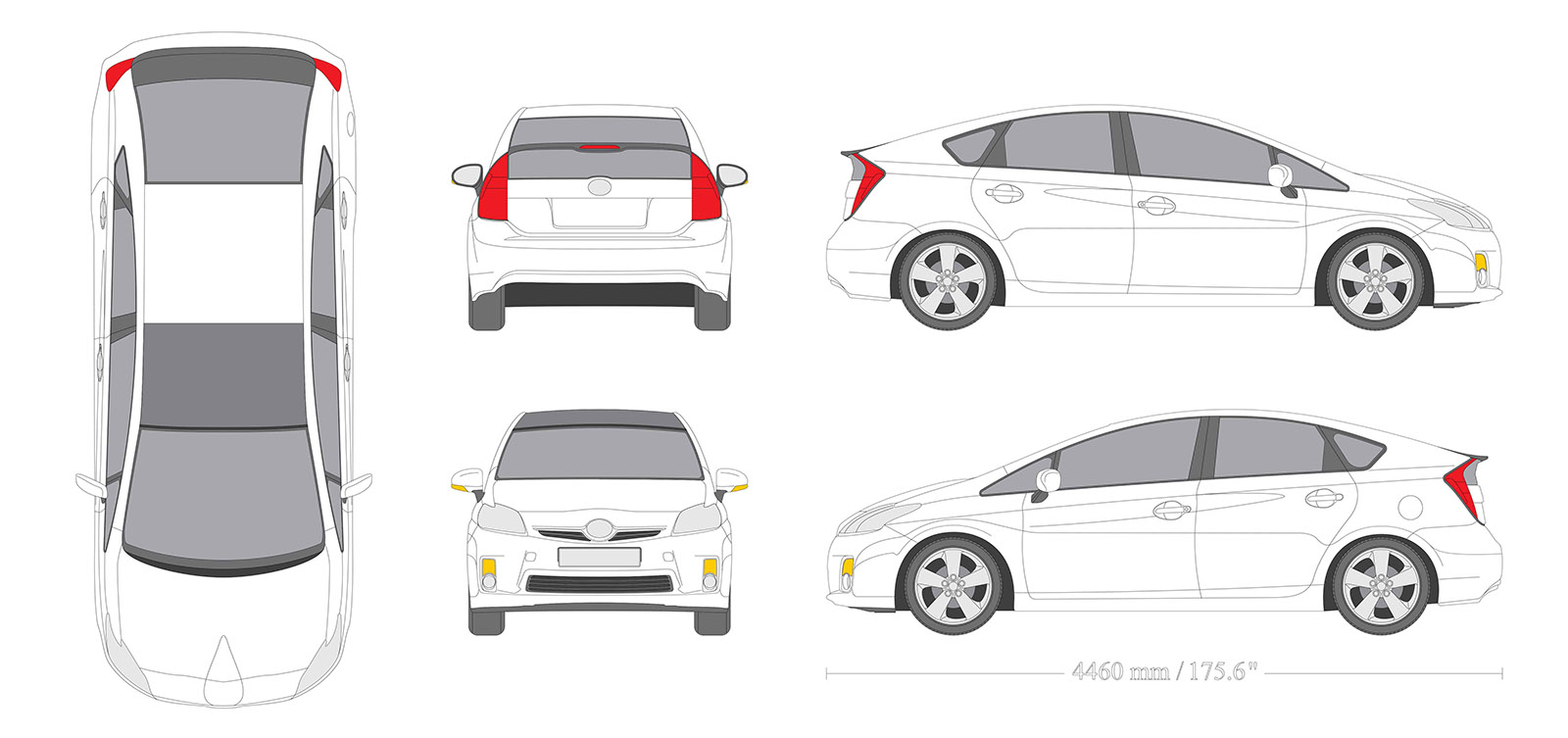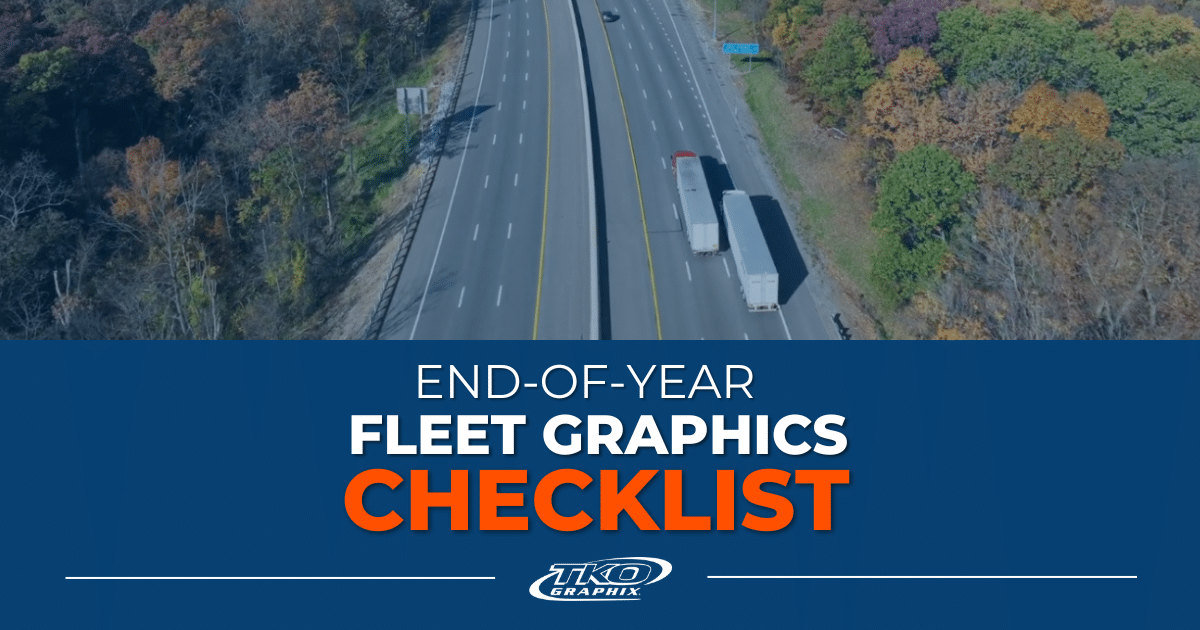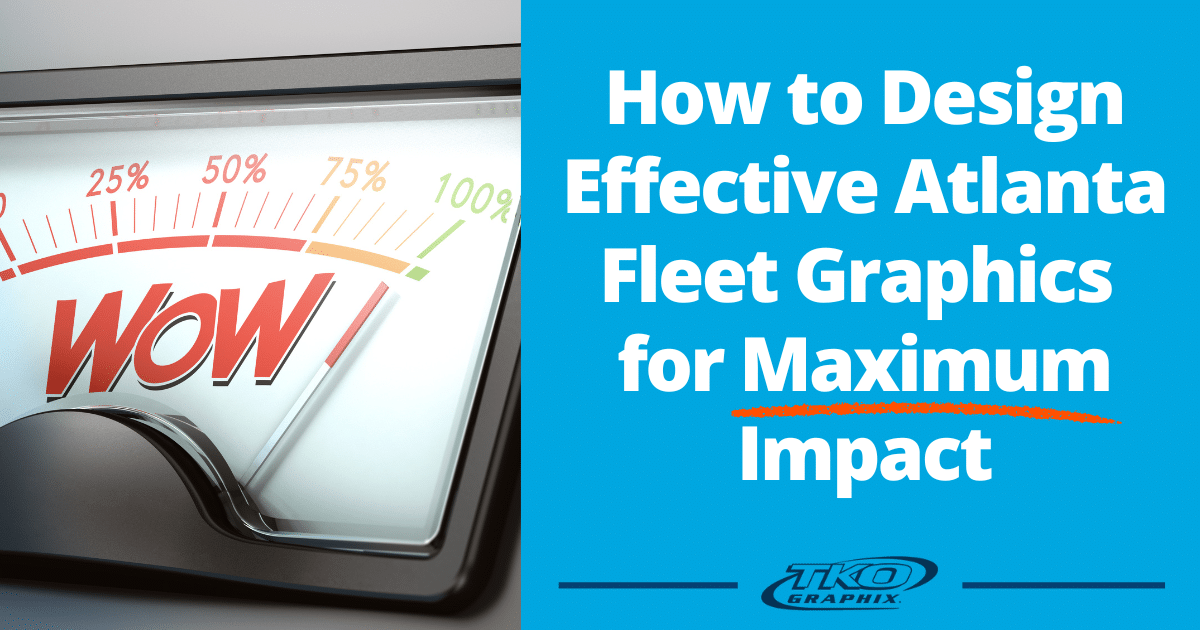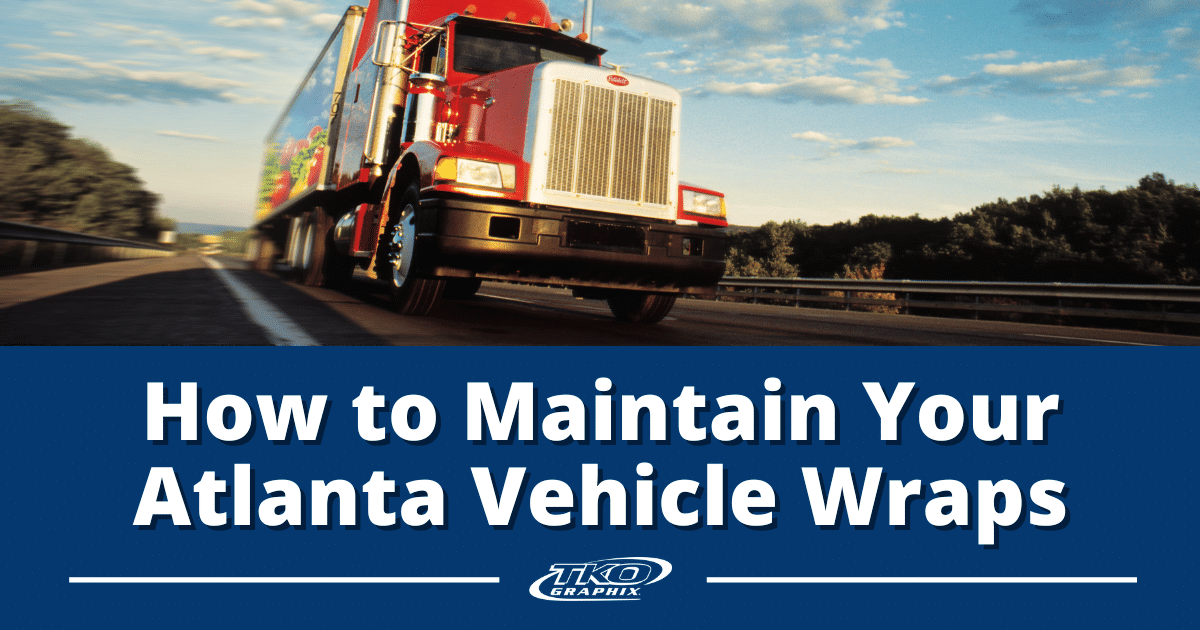I am privileged to work on a team with six talented designers. I’m not a designer, I’m a copy person, but I’ve been exposed to them enough to know what they do is special. (And I did stay in a Holiday Inn Express once.) Designing a three-dimensional graphic takes forethought, precision, and attention to detail. Even experienced designers untrained in vehicle graphic design struggle. With fleet graphic design — there’s more than meets the eye.
Start with Accurate Measurements
Although templates are available for most vehicles, they don’t always share all the information needed. Sometimes only measuring the vehicle will produce accurate information. When working with a template, a key consideration is matching the template to the vehicle. For example, all Ford F150’s aren’t alike, there are long beds, and short beds, and crew cabs, and more.
“For example, to say you have a 2020 Ford F150 isn’t enough information. The F150 is available in at least a dozen packages from XL, XLT, and Lariat to the Platinum, as well as in regular cab, extended cab, two-door, four-door, and with multiple options. One graphic design will not fit all the variations of the 2020 F150.
Other vehicles may vary by offering extended and high roof models, cars can be two or four doors, and trucks, delivery vans, and trailers come in myriad combinations. So, where do you begin to give the designers the information they need? This simple checklist is a good place to start. It answers the question what does a vehicle graphic designer need to know.” — FAQ: What Does a Vehicle Graphic Designer Need to Know About My Vehicle?
Think in 3 Dimensions
Do you want your phone number and website URL on both sides, front, and rear of your vehicle? Does the photo wrap from the rear of the vehicle to the sides? How will the design look if the windows are rolled down or the door is opened? Will the door seams or gas cap fall in the middle of text?
I remember a potential sponsor for an Indy car whose product came packaged in a bottle. Their creative team sent us a beautiful design for the race car with the bottle on the nose. Their design shared every view of the race car. Unfortunately, it wouldn’t work. The manager of our design team, showed me by using a 3D template how the design would appear on the car. You couldn’t tell it was a bottle. It called for a total redesign; it needed our teams touch.
Picture the Vehicle on the Road
Imagine the design travelling on the highway at 65 MPH. How would it look? Design it too busy, and it’s a blur. If the text is too small, no one will be able to read it. Simplicity is key when it comes to text on a vehicle graphic. A single call to action and contact information is usually enough.
“Any combination of font style, size, and color can and will affect the readability of vehicle graphics. The key to effective fleet graphic design is combining appearance with legibility. There are too many designs, which although visually striking, are difficult to decipher, which detracts from the purpose of vehicle advertising.” — What’s the Best Font for Vehicle Graphics?
Use High Resolution Images
Vehicle graphics requires high resolution photos. Something found on a Google image search will probably not work for a project as large as a vehicle. We recommend using vector graphics. “Vector graphics use geometric shapes such as points or lines as the mathematical expression of the design. The shapes are assigned an exact position on the plane of the graphic where aspects such as color, shape, and thickness can be added. In this way, the size of the graphic can be increased without diminishing clarity or other qualities of the image.” — TKO Tech Talk Vector graphics
Coverage
Adhesive vinyls will not adhere to certain materials, for example, several types of plastics. Local ordinances may prohibit covering part or all areas of vehicle glass. The online magazine Sign.com shares this, “According to experts, applying adhesive vinyl graphics to plastic can be a challenge. Some are friendly, and some are not. Outgassing is a possibility much of the time. Before considering wrapping a plastic substrate, you need to know its chemical composition.
Polycarbonates contain water which when covered with vinyl graphics may outgas forming water bubbles between the substrate and vinyl. An experienced applicator can determine the best method of installation, dry or wet.
Polymethacrylate (PMMA) is the clear, shatterproof plastic used as a replacement for glass. Most adhesives will stick to a PMMA surface; however wet installation may be the best to avoid outgassing.
Polyethylene is used for plastic bags, containers, bottles, and tarps. Vinyl can be applied to this material using dry application and for some applications heat may be required.
Polystyrene is a hard plastic. For example, computer casings are made from polystyrene. This material can be wrapped, but outgassing varies from formula to formula and may cause separation.
Styrofoam is a polystyrene plastic, and although vinyl can be applied it’s difficult and isn’t recommended on some types of Styrofoam
Polyvinylchloride (PVC) is in most cases user-friendly for adhesive vinyl application; however the hardness of the plastic impacts the installation. Hard PVC will accept the vinyl, but may be difficult to remove while softer PVC may not offer the best adhesive surface.” — Can I Apply Vinyl to This?
Stand Out
Let’s face it, there’s a lot of competition vying for peoples attention on the road. Other fleet vehicles with graphics, billboards, signs, and radio ads overwhelm drivers. Studies have shown that more than 90% of Americans can be reached by fleet graphics. However, reaching potential customers and connecting with them is two different animals. So, how do you create fleet graphics that stand out in a crowd?
“Vehicle graphics, when used properly, are an effective tool not only to stand out, but also to stand above your competition. Consider this, the biggest and best in almost any industry advertise on their fleets. Their vehicles have more than simple identification including company logos, fonts, colors, taglines, contact information, and calls to action. When a consumer sees these vehicles, they immediately know who they are because they identify the car or truck with the brand.” — Here’s Why You Should Choose TKO Graphix for Your Fleet Graphics
The Best Practice for Fleet Graphic Design
The best practice is to hire an experienced vehicle graphics designer. Most reputable vehicle graphics providers, including us, offer design. I began this post with a story about an Indy car design fail. An ad agency with experience designers submitted the design. However, they had little or no experience in vehicle graphic design. There’s a big difference. If you’re considering a car or truck wrap design — hire a pro.
At TKO we offer full service. We can tackle every, or any, part of your project. At TKO, we provide complete graphics solutions, from start to finish. As TKO Graphix president, Tom Taulman II said, “We can, design, manufacture, de-identify, and install, and we’re capable of any of the steps you may need.”
If we can answer any questions or help with any part of your fleet graphics needs, contact us.
TKO Graphix remains open to serve our customers. We continue operations as an essential business supporting the critical work done by many of our customers.








Great article about designing car graphics! Here is another blog post that offers information about the benefits of using car graphics and choosing the right type or car graphic. http://www.ashfieldprinting.co.uk/blog/custom-car-graphics-decals/